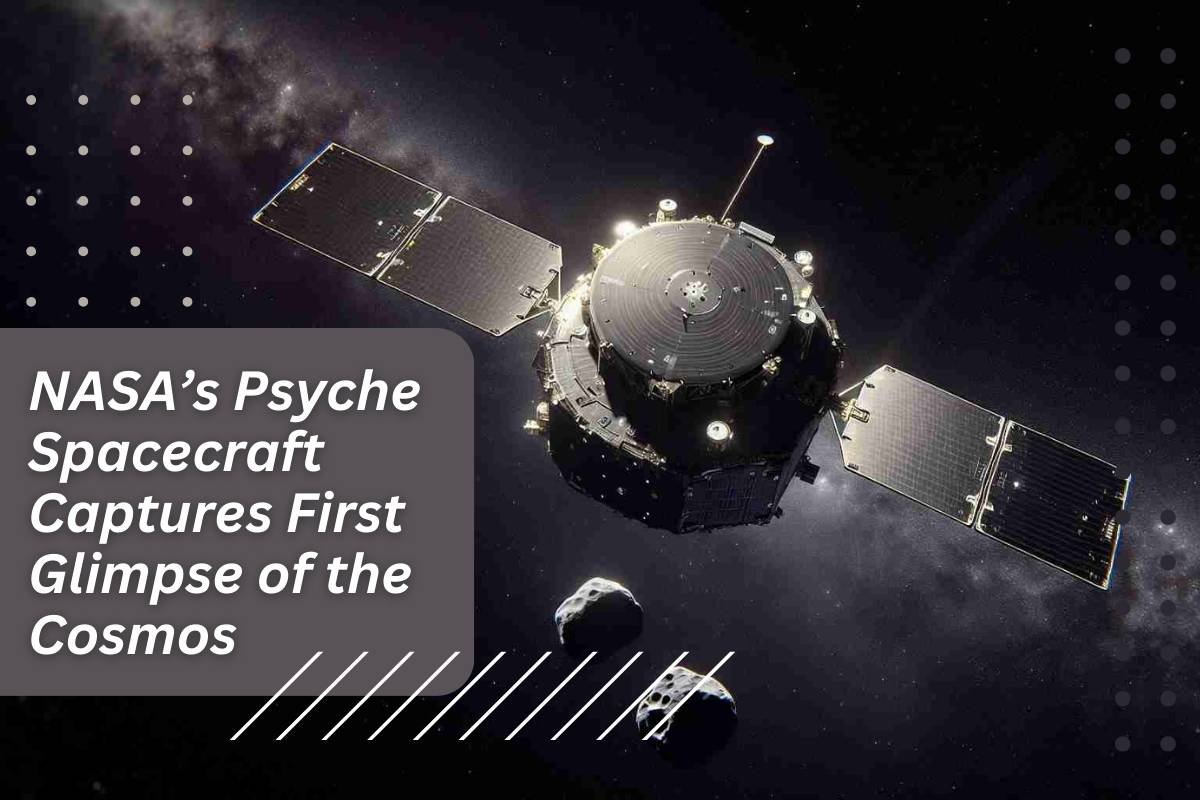NASAs Psyche spacecraft marked a significant milestone on December 4th as it opened its eyes to the vastness of the universe. Launched atop a SpaceX Falcon Heavy rocket on October 13, Psyche embarked on its pioneering interplanetary mission, en route to study the intriguing asteroid 16 Psyche. Positioned between the planets Mars and Jupiter, 16 Psyche is of immense interest to planetary scientists due to its believed composition of predominantly metal, specifically iron and nickel.
The spacecraft had been navigating the cosmos in darkness since its launch, as scientists delayed activating its solar-winged craft’s cameras. This decision was aimed at optimizing conditions for the eventual unveiling of Psyche’s primary target. The asteroid’s metal-rich composition offers a unique opportunity for scientists to indirectly analyze the Earth’s core, as it shares similarities with the specific metals found in our planet’s center.
NASAs Psyche spacecraft’s First Light—A Glimpse into the Cosmos
Breaking the cosmic silence, on December 5, the Psyche mission team announced a groundbreaking development. The spacecraft’s imaging instrument, consisting of a set of twin cameras, captured its inaugural space photo on its way to 16 Psyche. The released image is a mosaic of raw data collected on December 4, revealing a stunning spread of stars visible from Psyche’s perspective. Although the term “raw data” implies that extraneous light signals have not been removed, the team assured that they would refine and enhance the image in the coming days.
Referred to as Psyche’s “first light,” the image serves as a curtain-raiser for the mission. Jim Bell, the Psyche imager instrument lead from Arizona State University, expressed the team’s excitement, stating, “These initial images are only a curtain-opener. For the team that designed and operates this sophisticated instrument, first light is a thrill.”
A Glimpse into the Future of Psyche’s Mission
While the recently unveiled image is awe-inspiring, it is merely the beginning of the visual journey Psyche promises. The team plans to utilize star images like these to assess the functionality of Psyche’s imager, laying the groundwork for future milestones. In 2026, NASAs Psyche spacecraft is scheduled to make a flyby of Mars, capturing breathtaking views of the Red Planet. The pinnacle of the mission is anticipated in 2029 when Psyche is set to provide unprecedented visuals of its target asteroid.
With a total of 68 separate images, the portrait encompasses celestial bodies in the constellation Pisces, offering a glimpse into the cosmic tapestry. As Arizona State University’s Jim Bell affirmed, “We look forward to sharing all of these visuals with the public,” inviting the world to join in the exploration of the mysteries of the cosmos.
Also read: Retired NASA Telescope Reveals Clues To The Elusive ‘Size Gap’ In Exoplanets









